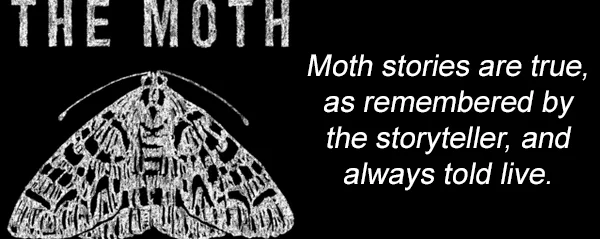The truth, the whole truth, and nothing but?
Do you swear to tell the truth, the whole truth, and nothing but the truth?
We’ve all heard this question, or something similar, asked of witnesses in television or movie courtroom scenes. And for anyone who has served on a jury, you have heard it first hand. But what does this question really mean, is it a reasonable expectation, and if so, how does it pertain to the practice of telling personal stories?
While it’s true that we tell personal stories to each other all the time – every conversation can be thought of as a story – in this article I’m referring to stories that we plan to share in public; in print, on stage, radio shows or podcasts, and thinking about the nature of truth when we’re telling these stories.
Although the practice of telling such stories has been around for millennia, the desire to hear them, and the opportunities to do so, have increased dramatically in recent years. As we’ve become more connected, and technologically savvy, we’ve developed a thirst for story that seems to be unquenchable.
Millions tune into broadcasts, view videos, or attend live events with a desire to hear stories about our shared human experience. Stories about who we are and where we have been, stories about the struggles we’ve endured, and the universal hope for a better future.
In my coaching practice I’ve had the pleasure of working with hundreds of folks who want to tell impactful personal stories; professional speakers and novices, students and academics, entrepreneurs and CEOs, prison inmates and special forces, scientists and creatives.
During the process of developing their storylines the topic of truth often comes up when many say, “It’s impossible to remember every detail. How truthful does my story need to be?” And their difficulty in remembering the truth is especially troublesome for experiences and conversations that happened a long time ago. Our memory can be rather permeable.
That’s when I’ll bring up the The Moth. I listen to a long list of podcasts each week for story inspiration, and The Moth remains at the top of the list. I never miss an episode. They host live storytelling events, and feature the best ones on The Moth Radio Hour. When it comes to truth, they address the issue best, in my opinion, by announcing during each broadcast:
With this in mind I encourage speakers to do their homework and verify everything they can, especially any statistics, research data or historical references. When it comes to the topic of personal experience, they should reach out to anyone mentioned in their story to verify the facts, or at least hear their side of the story to be sure the essence of the narrative is true.
The reason is straightforward. If any aspect of a story is untrue, the entire narrative becomes suspect. One bad apple can, in this situation, spoil your story’s impact. When trust is broken between the storyteller and their audience it becomes difficult to repair. You need to connect with your audience from a place of honesty and integrity.
Should you ever have a desire to embellish your story as a way to make it stronger, I would counter that you don’t need to make things up in order to make a point, and if you feel you do, there’s something fundamentally lacking in your story to begin with, something that lying won’t/can’t solve. Instead, rethink your premise, and dig deeper into your narrative in order to find experiences or related information that supports the meaning of your story.
Everyone is entitled to their own opinion,
but not their own facts. – Daniel Patrick Moynihan
But there are other elements in personal storytelling – ideas, insights, beliefs and opinions. This part of your narrative is not based on empirical facts, but rather your view of the world, how you see things, what is true for you, which is subjective rather than objective.
An audience wants to hear your opinion – it’s how they connect to you as a person and come to understand the meaning of your story. But there should never be any confusion as to whether your words are presented as fact or opinion. Expressions such as, “It seemed to me“, “The way I see it“, “The way I felt was“, can let the audience know that you’re shifting from fact to opinion. Done well, they will come to better understand the journey you’ve been on.
You must be the guardian of truth within your story, as it becomes a reflection of you.
contact me to discuss your storytelling goals!
◆
Subscribe to our newsletter for the latest updates!
Copyright Storytelling with Impact – All rights reserved

